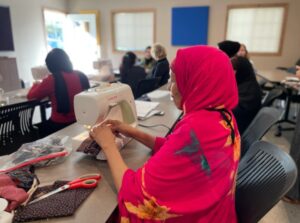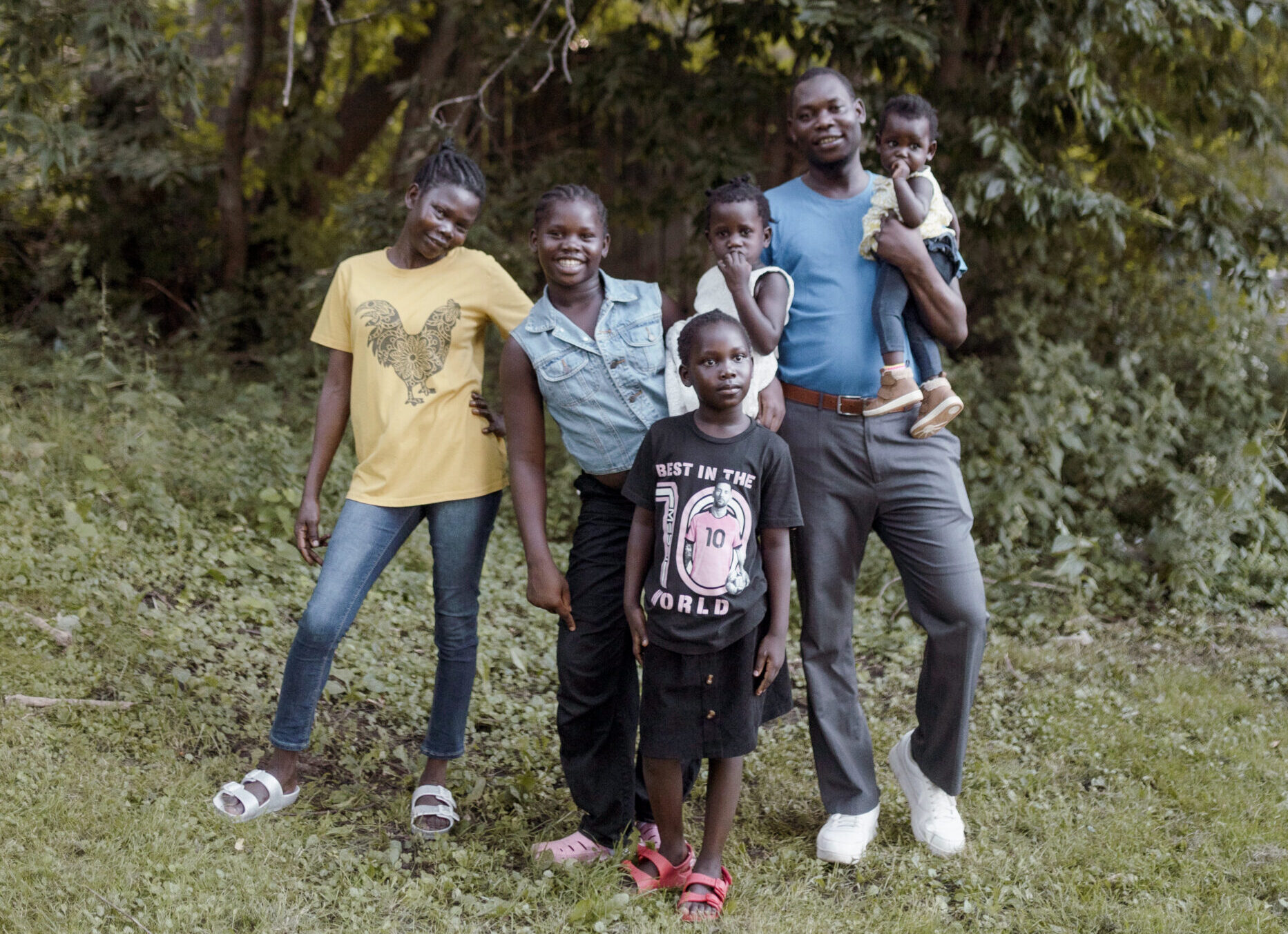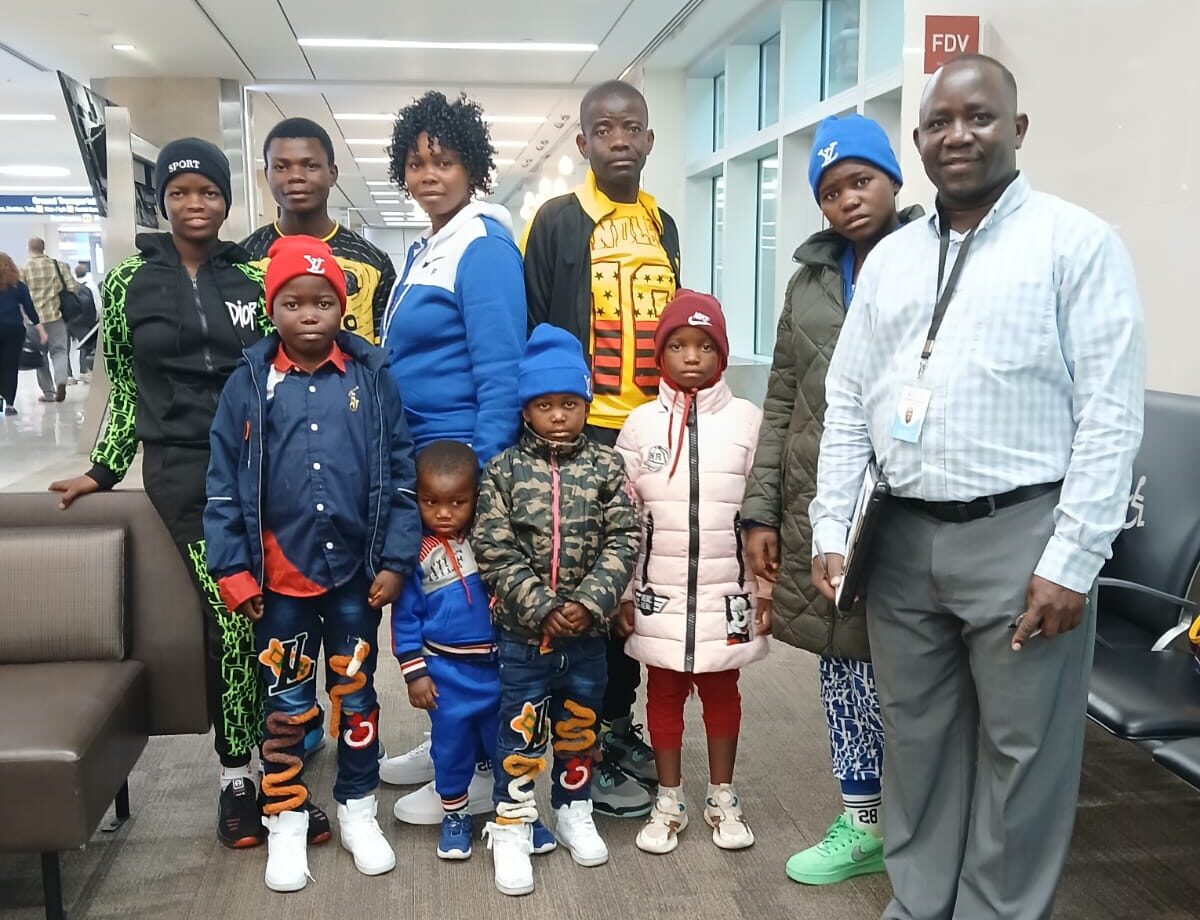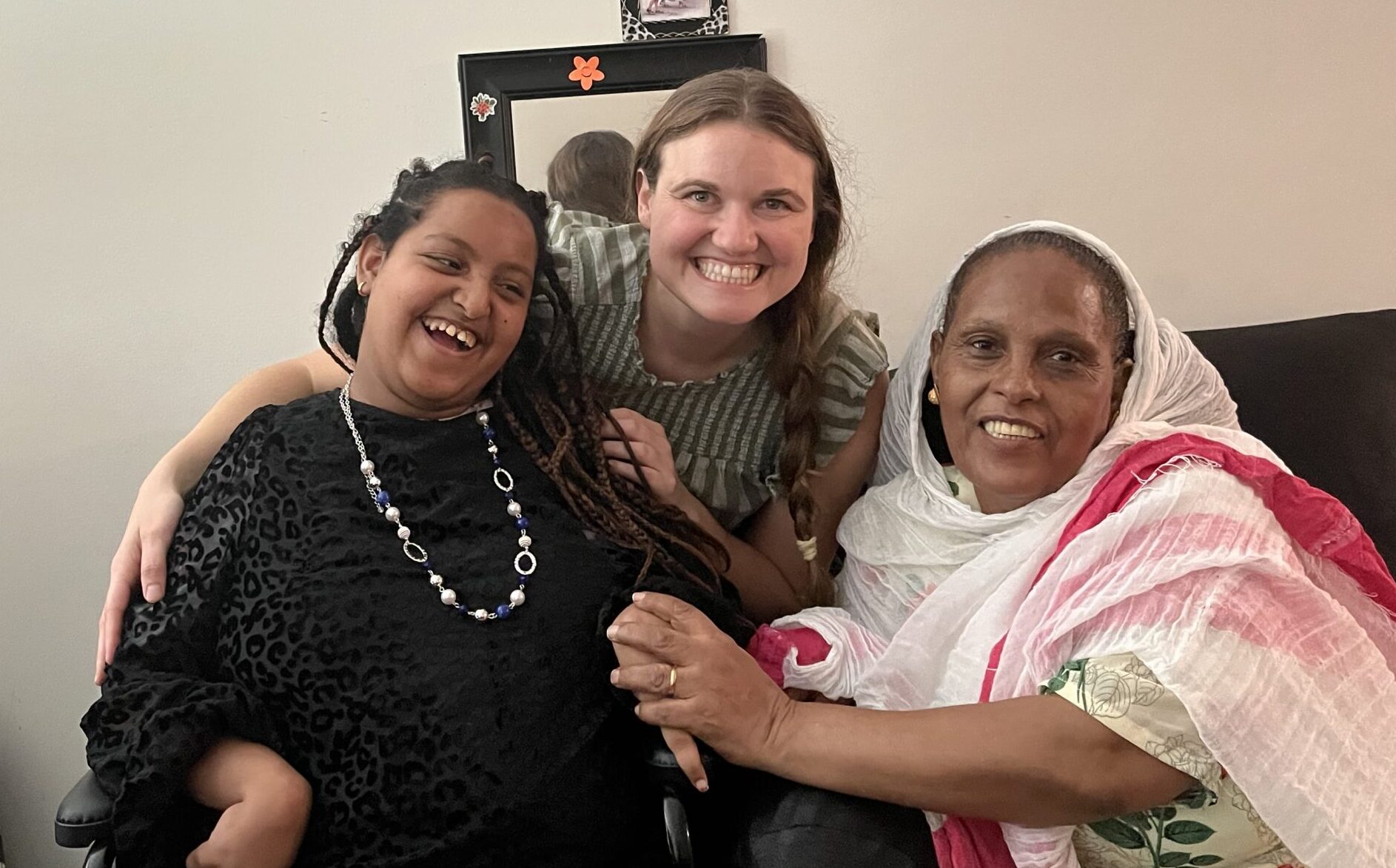Needle and Thread Offer Life Skills and Kinship to Somali Women and Elders
 “Of all our activities in St. Cloud, this is one of my favorites. Sewing classes are the most relational.” Samantha Grimsley, Arrive Ministries’ Area Director in St. Cloud, recounts the genesis of what is now a comprehensive sewing program.
“Of all our activities in St. Cloud, this is one of my favorites. Sewing classes are the most relational.” Samantha Grimsley, Arrive Ministries’ Area Director in St. Cloud, recounts the genesis of what is now a comprehensive sewing program.
It started with a curious group of women from Milaca Evangelical Free Church that came to St. Cloud several years ago to attend an Arrive Ministries cultural tour. Samantha led the women through various locations showcasing St. Cloud’s diversity, including a mosque, an African restaurant, and a Somali market.
One female students Bisharo recently told her teacher, “This is the best part of my week!”
As the church women walked through the market, elaborate textiles caught their attention: dresses and scarves from a variety of patterns and colors.
“Do you sew these dresses?” One of the Milaca women asked the Somali woman selling some clothes.
“No, I don’t know how… but I would love to learn!”
A few days later, Samantha received an unsolicited message: “Are you in need of a sewing machine?” Samantha and the group of Milaca women concocted a plan, and the pieces began to move into place. They gathered donations of sewing machines and bags of material and promoted the upcoming event among the Somali community.
The first sewing class was held at the local YMCA. It was a massive amount of work to carry all the machines and material in. The volunteers didn’t know if anyone would show up.
That first day, three Somali women came. They returned the week after. Since then, the class has moved from the YMCA to a home, then to a community center which offers storage. This group of sewers have gone from one small class to five full classes!

Sewing Classes for Men
Recently, a Somali man who came to the community center for another reason noticed the sewing class and stopped in.
“I have a group of men who want to learn to sew!” This man knew a group of elders from a senior center that needed some opportunities to connect with others.
“I have a group of men who want to learn to sew!”
While tailors are typically men in traditional Somali culture, this was the first group of men to show interest in the sewing classes. Samantha and the teachers quickly recruited a male volunteer to join their team.
“The dynamics are definitely interesting,” Samantha shares. “We have a lot of fun.”
Many from the senior center have never used scissors before. These classes give them basic skills like cutting and threading a needle.
Although the Basic Sewing course lasts eight weeks, many students want to continue expanding their sewing skills, so sewing instructors are in high demand.
Cultural Exchange
Somali phrases vault over the sound of the machines: “Slow! Slow!”
All sewing instructors learn a few key Somali words: “slow” and “stop”. In moments during class when a student develops a “lead foot” on the pedal, the excitement rises and Somali phrases vault over the sound of the machines: “Slow! Slow!” Practiced teachers know these phrases so well that by now they come naturally and unrehearsed. As the Somali students are learning sewing and English, they are also teaching.
One sewing class has 3 Somali women and 3 Iraqi women. Although Somalis and Iraqis speak different languages, there is at least one proficient English speaker in both groups, so they are able to translate and communicate with each other. Another remarkable difference between these two groups is religion; Iraq is majority Shia Muslim and Somali are almost exclusively Sunni. Regardless of their differences in religion and language, these women sew peacefully side by side.
Why Sewing?
Creating is a reflection of our creative God.
What are the benefits to sewing classes? Practically, it gives men and women skills to steward their possessions and even make a profit. For many in that community, any mending or alterations means a two or three month wait due to the lack of available tailors in the community. These sewing skills give mothers and fathers skills to clothe their families properly.
Beyond that, sewing classes offer rich cultural interactions and relationships among teachers and students.
One female students Bisharo recently told her teacher, “This is the best part of my week!”
When another sewing student finished her sewing project, she threw her arm around her teacher holding her project above their heads and took a big smiling selfie. Although she doesn’t speak English, that gesture spoke greatly of her pride in creating something beautiful.
“Creating is a reflection of our creative God,” Samantha reflects, and creating across cultures offers transformation for everyone involved: refugees, immigrants, and the Church.





